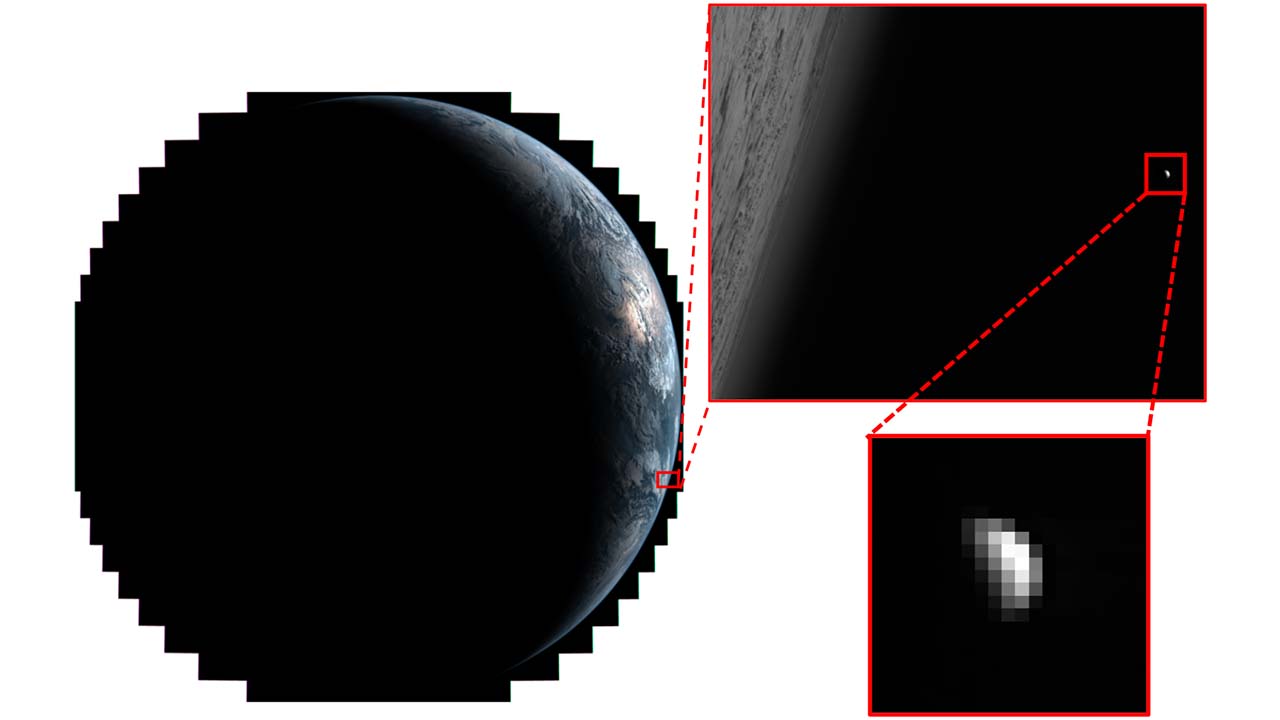
Have you ever found something unexpected in the background of a photo? Scientists looking at images of Earth taken by weather satellites found that Venus shows up in the background of some of the images. By collecting and analyzing these serendipitous observations of Venus, scientists were able to track temperature variations in Venus's atmosphere over nearly 10 years.
Venus has a thick carbon dioxide atmosphere with clouds of sulfuric acid. Like Earth's atmosphere, the Venusian atmosphere exhibits changes in weather patterns, but it has been difficult to track these changes. Telescopes observing Venus from Earth's surface are hindered by Earth's own atmosphere and Venus's proximity to the Sun. On the other hand, previous space-based observations of Venus have been limited either in duration, or the wavelengths (colors) of data they could collect.
Against this background, Gaku Nishiyama, associated with the German Aerospace Center, University of Tokyo, and National Astronomical Observatory of Japan, led an international team to look for Venus in the background of photos taken by the Earth weather monitoring satellites Himawari-8 and Himawari-9. The Himawari satellites, which take their name from the Japanese word for "sunflower," are operated by the Japan Meteorological Agency to take images of Earth at 10-minute intervals. Combined, Himawari-8 and 9 have been monitoring Earth since 2015. The satellites are capable of distinguishing 16 different "colors" across visible and infrared light. The Himawari field of view is slightly larger than the Earth, capturing the surrounding space as well. And sometimes, Venus shows up in the background behind Earth by coincidence.
Looking through the Himawari data, Nishiyama and his team found 437 cases where Venus shows up as a dot in the background. Even just a dot is enough to yield usable data. The team successfully observed long-term changes in the Venusian weather, specifically in the thermal structure of the atmosphere. The largest changes were seen in the temperatures around sunrise on Venus. These changes are believed to be related to waves circulating around the planet in the atmosphere.
These results provide new insights into Venusian weather, and serve to open a new field of study using weather satellites for planetary observations. There are many more weather satellites than just the Himawari family; and not just Venus, the other Solar System planets also show up in the background of weather satellite images from time to time. This unexplored data holds new discoveries waiting to be made, both used alone or in combination with planetary probe missions.
Release Information
Researcher(s) Involved in this Release
- Gaku Nishiyama (The University of Tokyo / Deutsches Zentrum für Luft- und Raumfahrt / National Astronomical Observatory of Japan (at the time of research))
- Tatsuro Iwanaka (RIKEN / The University of Tokyo (at the time of research))
- Shinsuke Uno (RIKEN / The University of Tokyo (at the time of research))
- Takeshi Imamura (The University of Tokyo)
- Shohei Aoki (The University of Tokyo)
- Yuka Fujii (National Astronomical Observatory of Japan)
- Makoto Taguchi (Rikkyo University)
Coordinated Release Organization(s)
- Coordinated Release Organization(s)
- The University of Tokyo
- National Astronomical Observatory of Japan
- Rikkyo University
Paper(s)
- Gaku Nishiyama et al. "Temporal variation in the cloud-top temperature of Venus revealed by meteorological satellites", in Earth, Planets and Space, DOI: 10.1186/s40623-025-02223-8






